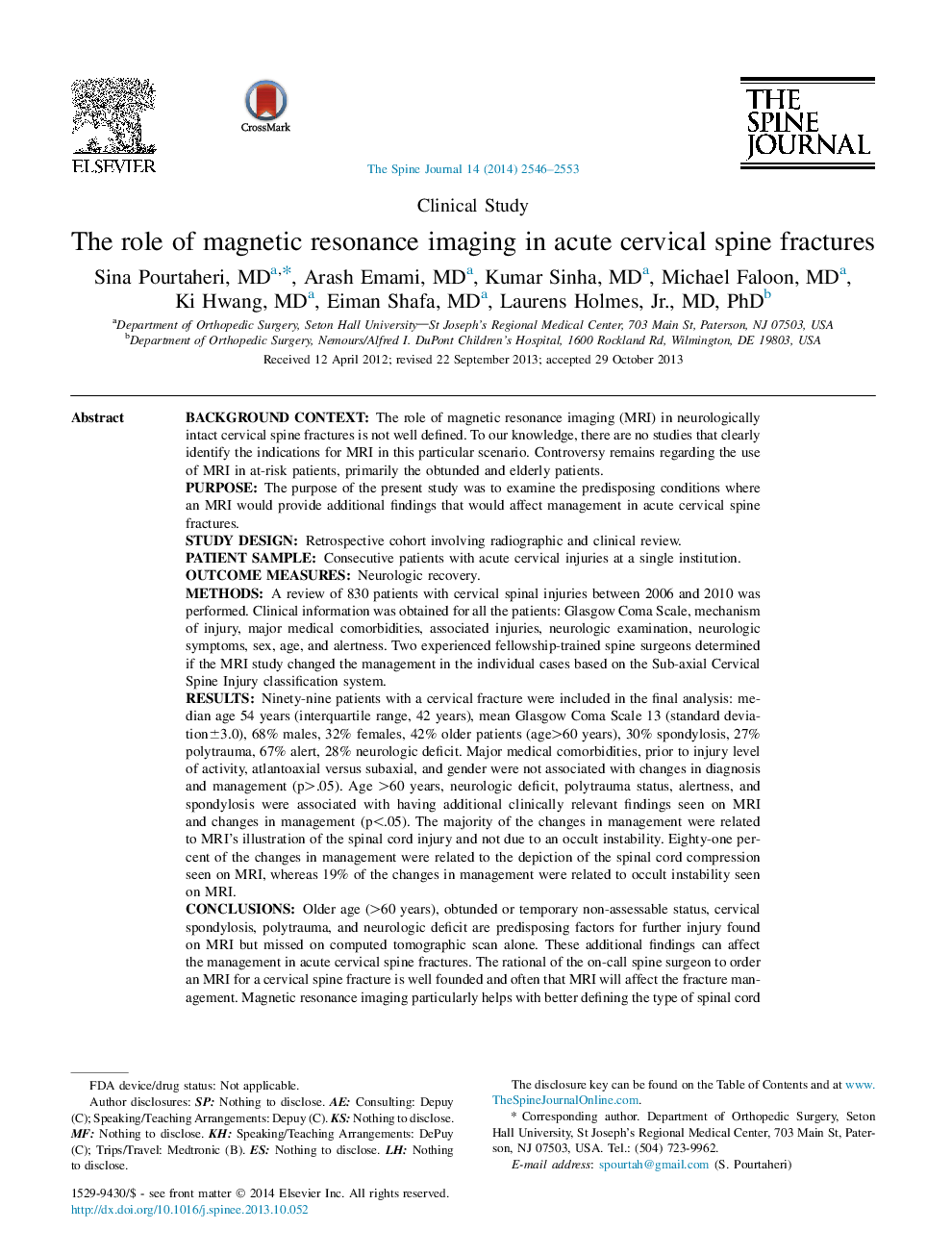| کد مقاله | کد نشریه | سال انتشار | مقاله انگلیسی | نسخه تمام متن |
|---|---|---|---|---|
| 6212702 | 1268588 | 2014 | 8 صفحه PDF | دانلود رایگان |
Background contextThe role of magnetic resonance imaging (MRI) in neurologically intact cervical spine fractures is not well defined. To our knowledge, there are no studies that clearly identify the indications for MRI in this particular scenario. Controversy remains regarding the use of MRI in at-risk patients, primarily the obtunded and elderly patients.PurposeThe purpose of the present study was to examine the predisposing conditions where an MRI would provide additional findings that would affect management in acute cervical spine fractures.Study designRetrospective cohort involving radiographic and clinical review.Patient sampleConsecutive patients with acute cervical injuries at a single institution.Outcome measuresNeurologic recovery.MethodsA review of 830 patients with cervical spinal injuries between 2006 and 2010 was performed. Clinical information was obtained for all the patients: Glasgow Coma Scale, mechanism of injury, major medical comorbidities, associated injuries, neurologic examination, neurologic symptoms, sex, age, and alertness. Two experienced fellowship-trained spine surgeons determined if the MRI study changed the management in the individual cases based on the Sub-axial Cervical Spine Injury classification system.ResultsNinety-nine patients with a cervical fracture were included in the final analysis: median age 54 years (interquartile range, 42 years), mean Glasgow Coma Scale 13 (standard deviation±3.0), 68% males, 32% females, 42% older patients (age>60 years), 30% spondylosis, 27% polytrauma, 67% alert, 28% neurologic deficit. Major medical comorbidities, prior to injury level of activity, atlantoaxial versus subaxial, and gender were not associated with changes in diagnosis and management (p>.05). Age >60 years, neurologic deficit, polytrauma status, alertness, and spondylosis were associated with having additional clinically relevant findings seen on MRI and changes in management (p<.05). The majority of the changes in management were related to MRI's illustration of the spinal cord injury and not due to an occult instability. Eighty-one percent of the changes in management were related to the depiction of the spinal cord compression seen on MRI, whereas 19% of the changes in management were related to occult instability seen on MRI.ConclusionsOlder age (>60 years), obtunded or temporary non-assessable status, cervical spondylosis, polytrauma, and neurologic deficit are predisposing factors for further injury found on MRI but missed on computed tomographic scan alone. These additional findings can affect the management in acute cervical spine fractures. The rational of the on-call spine surgeon to order an MRI for a cervical spine fracture is well founded and often that MRI will affect the fracture management. Magnetic resonance imaging particularly helps with better defining the type of spinal cord compression. Picking up occult instability missed on computed tomographic scan was possible with MRI but not as common.
Journal: The Spine Journal - Volume 14, Issue 11, 1 November 2014, Pages 2546-2553
